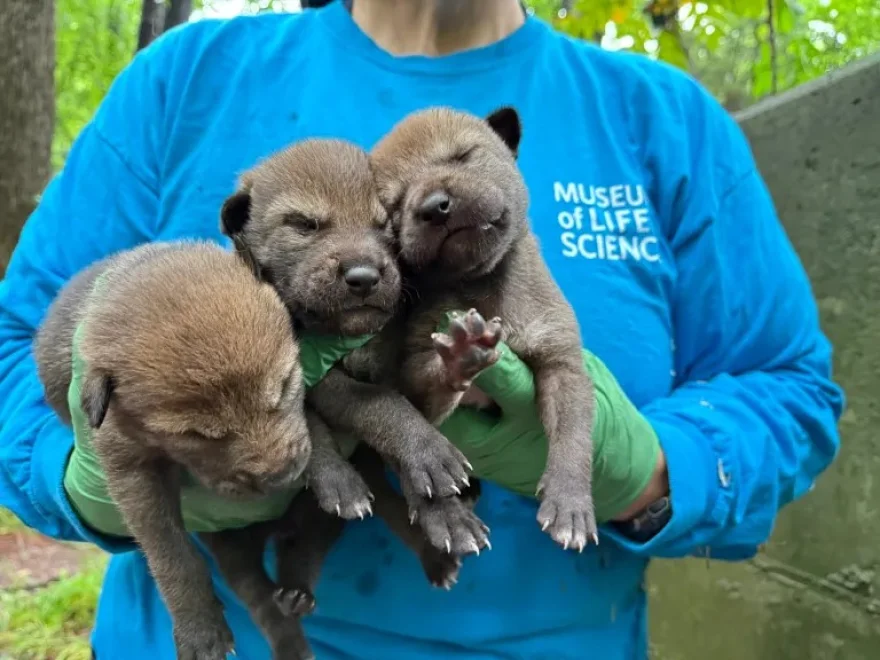
A Hopeful Future: Three New Red Wolf Pups Born at Durham Museum
In a heartwarming development for wildlife conservation, the Museum of Life and Science in Durham has celebrated the birth of three critically endangered red wolf pups. Born on May 3, these pups symbolize a crucial milestone in efforts to revitalize a species once prevalent as a top predator in the southeastern United States.

Both parents, a 7-year-old female named Martha and her 11-year-old mate Oka, were carefully selected two years ago as part of a genetic diversity initiative critical for the red wolf population's survival. Red wolves today are classified as critically endangered, with fewer than 300 individuals in existence both in the wild and under human care. Their dwindling numbers are stark reminders of the fragile balance of ecosystems and the importance of conservation efforts.
Sherry Samuels, Senior Director of Animal Care at the museum, expressed the significance of each new pup, stating, "Each pup born is crucial for the species' survival and offers hope for the broader red wolf population." This breeding success marks the museum's second consecutive successful season, following last year's litter of seven pups. Such ongoing efforts assure not only the continuation of the species but also inspire hope in the greater conservation narrative.
The broader context of these births is embedded within the ongoing challenges faced by red wolves. Once a widespread predator, their habitats have sharply declined, and today only about 20 red wolves are known to live in the wild, primarily in northeastern North Carolina. This makes each new birth at facilities like the Museum of Life and Science not just a triumph to celebrate but a necessary step towards potential recovery.
Visitors are encouraged to observe these new additions starting mid-June, although the museum staff remind everyone that patience and quiet observation will be key, given the shy nature of red wolves around crowds. The museum aims to foster understanding and respect for wildlife, a goal echoed by Samuels as she describes the excitement this summer will bring as they closely monitor the pups' development.
This moment of joy in the annals of red wolf conservation represents both a victory for the team at the Museum of Life and Science and a critical necessity for our planet's biodiversity. What does the future hold for these remarkable creatures? As we witness their growth, we are left to ponder the ongoing responsibility we share in safeguarding such endangered species.
We invite you to share your thoughts and insights on this uplifting story about red wolves and other conservation efforts. How can we foster awareness and engage more people in protecting our endangered wildlife?